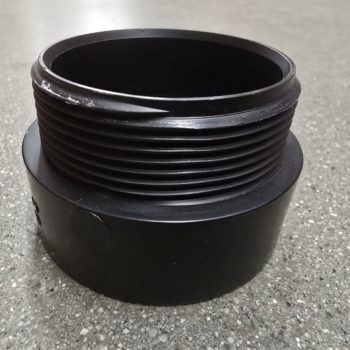Transitioning between PVC (Polyvinyl Chloride) and ABS (Acrylonitrile Butadiene Styrene) pipes is common in plumbing, especially when retrofitting or integrating different systems. Here are some of the most popular methods to achieve a proper transition:
1. Universal Transition Couplings
- Flexible Rubber Couplings: These couplings are often made from rubber (like Fernco couplings) and feature stainless steel clamps on both ends. They can securely connect ABS to PVC without needing special adhesives. This method is preferred in many cases due to its flexibility and ease of use.
- Uses: Ideal for drainage, waste, and vent systems where different pipe materials meet.
2. Transition Cement (for DWV Systems Only)
- Special ABS to PVC Cement: Cement designed specifically for bonding ABS to PVC. It is a solvent-based cement that chemically melts both pipe surfaces, creating a strong joint. Note that this method is generally limited to non-pressure DWV (drain-waste-vent) systems.
- Uses: Primarily for low-pressure situations like vent and drain lines.
3. Male/Female Threaded Adapters
- Threaded Transition Fittings: Using male or female threaded adapters allows plumbers to join ABS and PVC through a mechanical connection. This method is often used for specialized or pressure applications where solvent welding is not advisable.
- Uses: Suitable for hot water lines, pressurized applications, and areas where future disconnection may be needed.
4. Flanged Couplings
- ABS/PVC Flanged Connections: In some cases, flanged fittings can be used to transition between PVC and ABS. This method is more common in industrial or commercial settings where pipes need to be bolted together and removed easily.
- Uses: Industrial settings, irrigation, or wastewater systems.
Important Considerations:
- Code Compliance: Always check local plumbing codes as some areas do not permit solvent welding between ABS and PVC. Universal mechanical couplings, such as flexible or shielded couplings, may be the only option allowed in certain regions.
- Application Type: Consider the specific requirements of the system (pressure, temperature, and flow) to ensure a durable and reliable connection.
Conclusion:
When transitioning between PVC and ABS, the method you choose depends on the specific application, local codes, and whether you're working with a drainage or pressurized system. Products like flexible rubber couplings and threaded fittings offer the most versatility, while solvent cement is ideal for non-pressurized applications. At 247Garden, you can find a range of transitional fittings to help with the transition between ABS and PVC pipes.
For best results, it's important to ensure that the chosen transition method meets the plumbing codes in your area.
-
 1-1/2 in. ABS Trap Adapter Male w/ PE Nut NSF ASTM D2661 DWV Pipe Fitting$1.280 in stockOut of stock
1-1/2 in. ABS Trap Adapter Male w/ PE Nut NSF ASTM D2661 DWV Pipe Fitting$1.280 in stockOut of stock


















